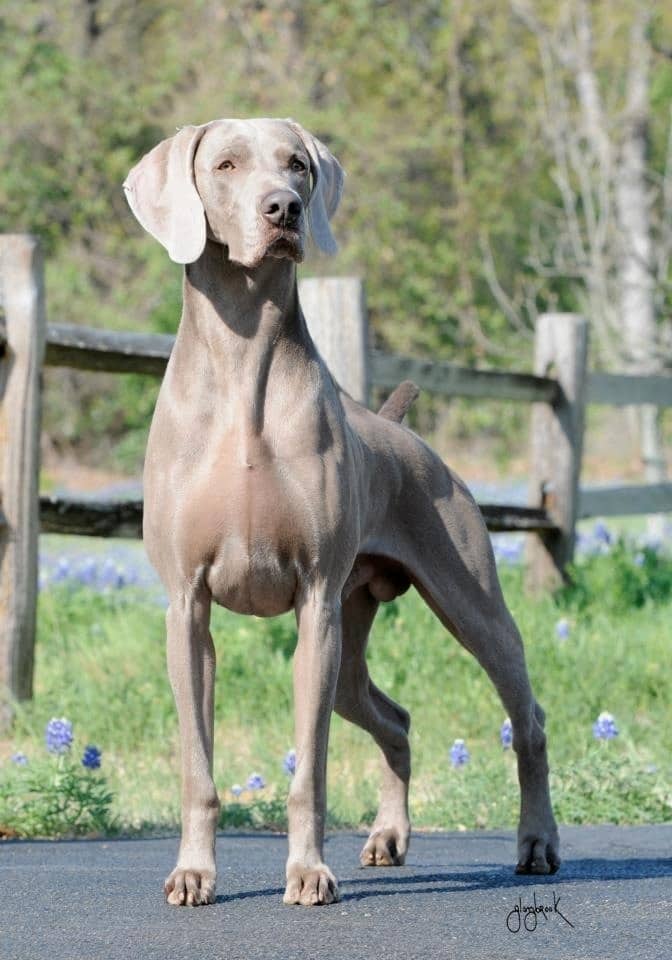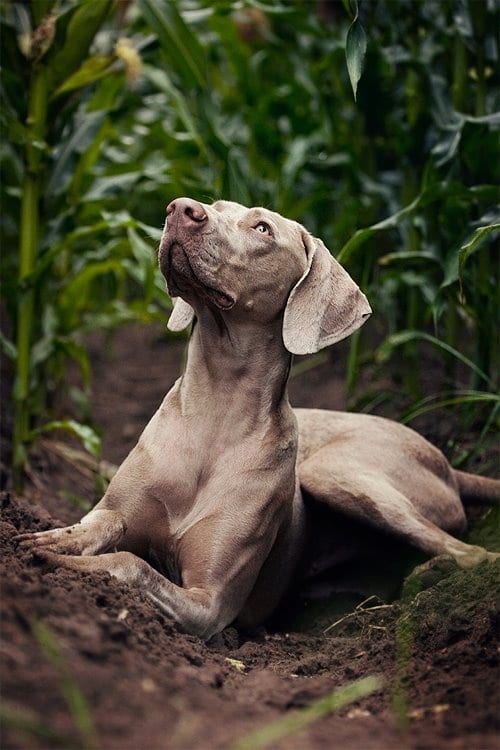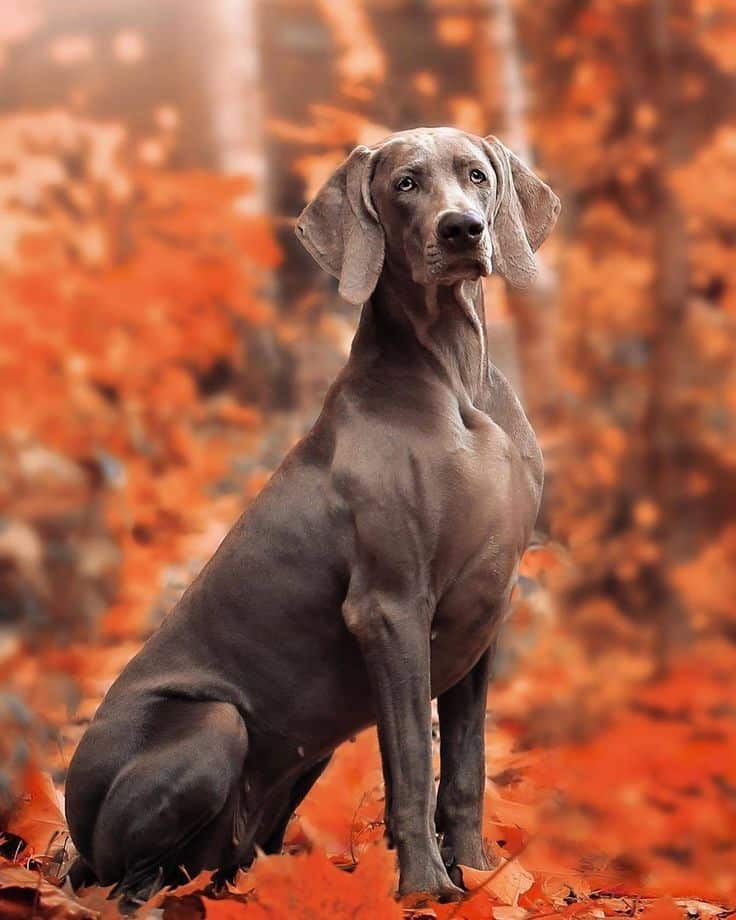Your Guide to Grey Dogs Unveiling 25 Top Grey Breed Dogs

Dogs, tracing their ancestry back to the grey wolf about 130,000 years ago, have evolved through selective human breeding to form over 150 distinct breeds today, including striking grey dogs such as the Cane Corso . These breeds, a result of intense interbreeding for sharply individual traits, have led to the concentration of many disease-causing genes, highlighting the importance of genetic research like the ‘dog genome project’ .
Meta Description:
Dive into the universe of dim variety canines with our useful aide. Find the different varieties described by their shocking dark coats, from the honorable Weimaraner to the smooth Greyhound. Find out about their origins, temperaments, and distinctive characteristics, which make them beloved companions for dog lovers all over the world.
Coat color in dogs, including the elegant grey, is intricately determined by genetics, with eight genes playing a pivotal role in this aspect . Among the top grey dog breeds is the Cane Corso, known for its majestic appearance and loyalty, embodying the remarkable diversity and specific characteristics that have been cultivated in dogs over centuries .
Common Traits and Care Considerations for Gray Dog Breeds
Grey dogs, with their unique and captivating coats, exhibit a range of characteristics and care needs across different breeds:
- Intelligence and Temperament: Breeds like the Cane Corso and American Staffordshire Terrier are noted for their intelligence and confidence. Early socialization is crucial for managing the Cane Corso’s dominant streak . Similarly, the Staffordshire Bull Terrier’s sociable nature benefits from early training to prevent behavioral issues.
- Exercise and Mental Stimulation: High-energy breeds such as Weimaraners and Siberian Huskies require ample exercise and mental stimulation. Neglecting these needs can lead to destructive behavior . Greyhounds, while fast and loving outdoor activities, also need to understand their place within the family pack .
- Grooming and Health Care: Regular grooming is essential for breeds like the Silky Terrier and Puli, with the latter’s unique corded coat requiring particular attention . Dental care is vital across all breeds, with recommendations to brush a greyhound’s teeth at least weekly . Additionally, managing diet and exercise is critical to prevent health issues such as obesity, which can shorten a dog’s lifespan .

Each breed presents a unique combination of care needs, from grooming to socialization, highlighting the importance of understanding specific breed characteristics for optimal care.
Top 5 Gray Dog Breeds
Exploring the diversity among grey dogs, the following breeds stand out for their unique characteristics and care requirements:
- Weimaraner:
- Height: Up to 27 inches tall .
- Weight: 55-90 pounds .
- Key Traits: Known for its distinctive grey coat and requiring ample exercise and socialization .
- Ideal For: Active lifestyles, benefiting from plenty of exercise and mental stimulation .
- Italian Greyhound:
- Height: Up to 15 inches tall .
- Weight: 7-14 pounds .
- Key Traits: Sleek, short grey coat with a tendency to alternate between relaxation and bursts of energy .
- Ideal For: Laid-back lifestyles, with a need for early socialization and housetraining .
- Silky Terrier:
- Height: Up to 13 inches tall .
- Weight: 5-12 pounds .
- Key Traits: Long, silky fur requiring regular grooming; full of life and friendly .
- Ideal For: Apartment living, requiring regular exercise and grooming to prevent matting .
- Puli:
- Medium size, with curly grey fur that forms into cords .
- Requires regular exercise and maintenance for its unique coat .
- Known for its herding instincts, necessitating socialization and training.
- Scottish Deerhound:
- Large size, with a rough, grey coat .
- Calm temperament, enjoying cuddles and requiring regular exercise.
- Needs socialization and training to thrive .

Each breed presents a unique combination of traits and care needs, from the active and social Weimaraner to the calm and cuddly Scottish Deerhound, highlighting the importance of understanding specific breed characteristics for optimal care.
Health Considerations and Lifespan of Gray Dog Breeds
When considering the health and lifespan of grey dogs, it’s essential to be aware of breed-specific conditions and general health considerations. Here’s a concise overview:
- Greyhound Health and Lifespan:
- Average Lifespan: 8 – 10 years, with some living up to 13 years .
- Common Health Issues: Periodontal disease, spine and neck issues, arthritis, corns, bone cancer, and sensitivity to anesthesia. They are also prone to racing-related injuries .
- Cane Corso Health and Lifespan:
- Median Lifespan: 9.29 years, with variations based on color and gender; black brindle individuals tend to live longer .
- Health Observations: A study suggests a relationship between brindle status and longevity .
- General Health Considerations for Medium-Sized Dogs:
- Lifespan Range: 12-15 years .
- Prevalent Health Issues: Include joint issues (hip dysplasia, patellar luxation), eye diseases (cherry eye, glaucoma), skin conditions (allergies, infections), and other concerns like hormone imbalances and heart murmurs .
It’s crucial for prospective and current dog owners to consider these health aspects to provide the best care for their grey companions.
Choosing the Right Gray Dog Breed for Your Lifestyle
Choosing the right grey dog breed for your lifestyle involves several considerations to ensure a harmonious match between you and your future pet:
- Living Situation and Dog Size:
- Apartment or limited space? Smaller breeds like Chihuahuas or Yorkshire Terriers might be ideal as they require less exercise and space.
- If you have a house with a yard, larger breeds such as Golden Retrievers or Labradors could be a better fit, thriving on long walks and outdoor activities .
- Understanding Dog Breed Characteristics:
- The predictability of purebred dogs in terms of physical characteristics, behavior, and personality comes from centuries of selective breeding . This predictability can help in choosing a dog that aligns with your lifestyle.
- Responsible Dog Ownership and Acquisition:
- Be informed and realistic about the responsibilities of dog ownership, including understanding the breed’s specific needs for nutrition, health, and training 19.
- When choosing a purebred, opt for breeders who are committed to the breed’s welfare, ideally members of the breed’s national club, and adhere to recommended health tests.
- For those inclined towards rescuing, communicate honestly with shelter staff about your lifestyle to find a suitable match, or consider breed-specific rescue groups if you have a preference for a certain breed .
These steps can guide prospective dog owners in making an informed decision, ensuring a fulfilling and responsible relationship with their grey dog companion.
grey breed dogs health
Grey Pitbulls, often celebrated for their unique coat color, require specific attention to their health and well-being. Here’s a closer look at their health considerations:
- Common Health Concerns:
- Hip Dysplasia: A condition affecting the hip joint, leading to pain and mobility issues .
- Food Allergies & Skin Conditions: Due to a lack of melanin, they may experience more skin-related issues and sensitivities to certain foods
- Hypothyroidism: A disorder where the thyroid gland doesn’t produce enough hormones, affecting metabolism
- Behavioral and Care Needs:
- Nature: Known for their loving and caring demeanor, making them great family pets
- Training & Socialization: Essential to mitigate fear responses and potential aggression, ensuring they grow into well-adjusted adults
- Exercise: They thrive on strenuous activities to manage their energy levels and prevent behavioral problems
Understanding these aspects is crucial for prospective owners to ensure a healthy, happy, and well-behaved grey Pitbull companion.

Conclusion
Throughout the discussion of grey dog breeds, from the noble Cane Corso to the energetic Weimaraner and the affectionate Silky Terrier, it’s evident that each grey dog brings its own set of characteristics, care needs, and health considerations. These breeds, with their unique origins and beautifully diverse traits, highlight the importance of thorough understanding and responsibility in pet ownership. Whether it’s managing the grooming needs of a Puli or ensuring the mental stimulation of a Siberian Husky, recognizing and catering to the specific needs of these grey-coated companions is crucial for their well-being and happiness.
As we conclude, the significance of choosing a breed that aligns with one’s lifestyle, along with the imperative of adopting from responsible sources, cannot be overstated. The health considerations, particularly for breeds like the Grey Pitbull with its specific challenges, underscore the need for prospective owners to undertake comprehensive research and preparation. The journey with a grey dog, enriched by its challenges and rewards, offers a unique opportunity to explore the depths of companionship and care in the canine world, ensuring a fulfilling life for both the dog and its human family.
FAQs
Q: What is a common breed of grey dog? A: The Weimaraner is renowned for its grey coat and stands out as a prominent grey dog breed. These medium-sized members of the gundog group can reach up to 27 inches in height and weigh between 55 and 90 pounds.
Q: Which dog breed closely resembles a grey wolf? A: The Alaskan Malamute bears a striking resemblance to the grey wolf, with its sturdy build and seasonal thick double coat that varies in color from light gray to black, mirroring its wolf ancestors.
Q: What breeds are typically used as guide dogs for the blind? A: Labrador Retrievers, Golden Retrievers, and German Shepherds are the most commonly used pure breeds in guide dog programs. The crossbreed of a Golden Retriever and a Labrador has been notably successful, inheriting many advantageous traits from both breeds.
Q: Can you name a large grey dog breed from Europe? A: The Weimaraner is a large European breed known for its grace, hanging ears, and a distinct short, sleek coat that comes in mouse-gray or silver-gray. It stands 23 to 27 inches tall and weighs 70 to 85 pounds.
